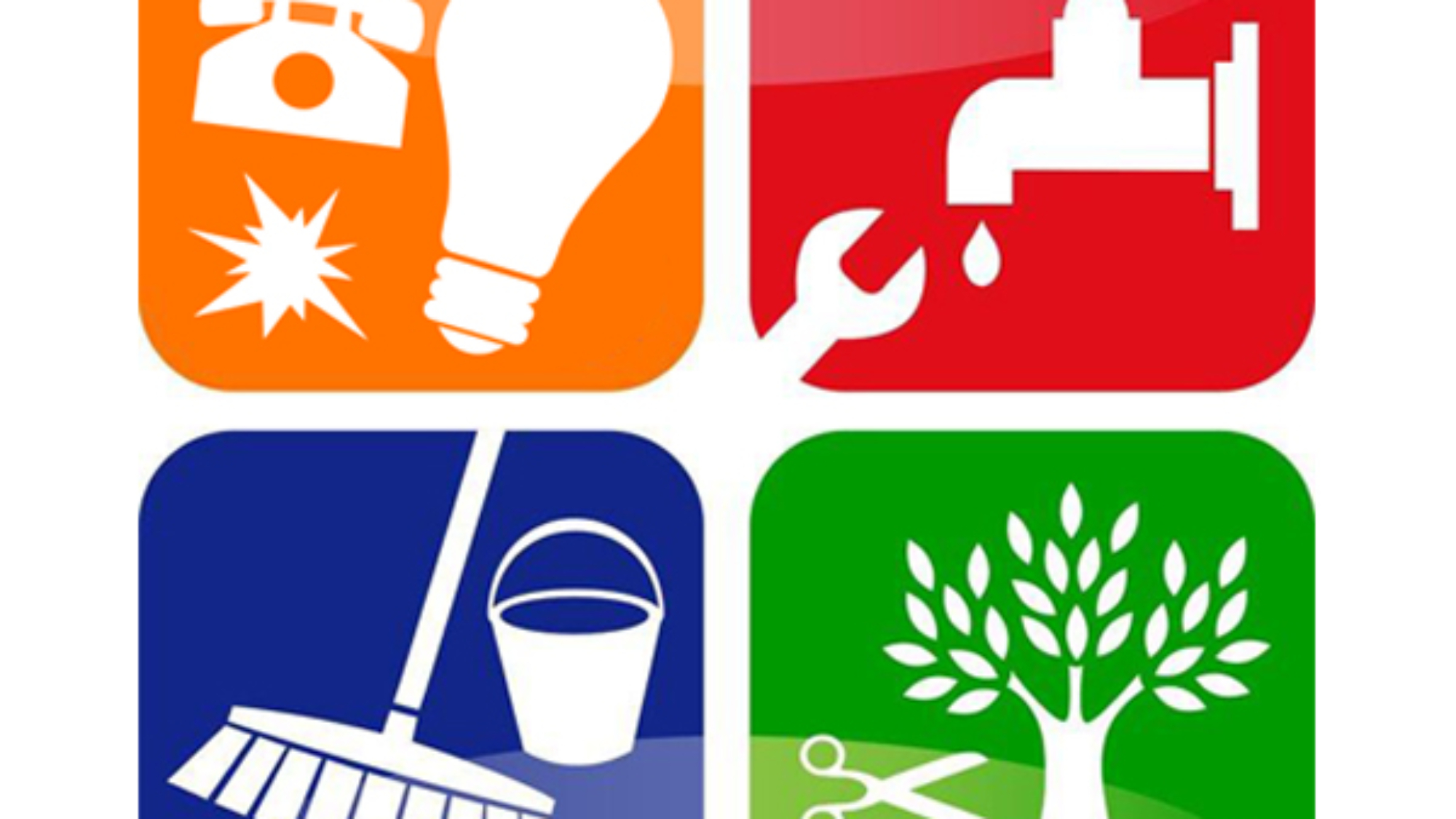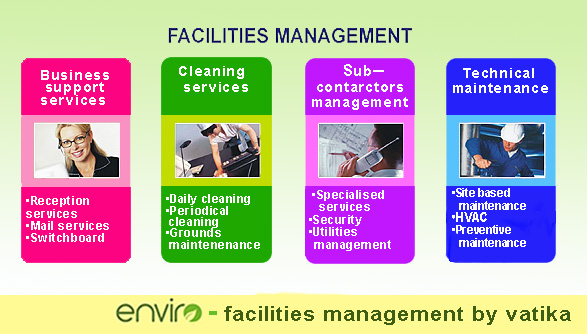Exploring the Benefits of Facility Management in Today's Corporate Landscape
Exploring the Benefits of Facility Management in Today's Corporate Landscape
Blog Article
The Vital Guide to Facility Administration: Methods for Success
Center administration plays an important function in the general success of an organization, acting as the foundation that sustains safety and security, efficiency, and efficiency. By using calculated methods such as integrated technical services and cultivating cross-departmental partnership, companies can significantly improve their operational structures. The subtleties of effective facility monitoring prolong beyond plain logistics and call for a detailed understanding of both measurable and qualitative metrics. As we explore these crucial methods, a closer examination exposes just how they can transform not simply facilities, however the actual culture within an organization itself. What might these transformations appear like in technique?
Comprehending Facility Administration
What comprises effective facility management? Efficient facility administration incorporates the control of various business features to make certain that constructed settings are safe, efficient, and conducive to productivity. Facility Management. It integrates the principles of service, design, and engineering management to create a smooth functional circulation within an organization
Secret aspects of facility management consist of room preparation, maintenance administration, and compliance with health and safety and security laws. Room preparation focuses on optimizing using physical sources to sustain organizational objectives, while upkeep administration guarantees that facilities are maintained in ideal condition, making best use of lifespan and lowering functional costs. Conformity with regulatory and lawful requirements is essential, as it safeguards the company versus potential responsibilities and improves its credibility.
Furthermore, reliable facility monitoring relies upon the strategic usage of innovation, such as Structure Administration Systems (BMS) and Computer-Aided Center Management (CAFM) devices. These technologies promote real-time tracking of structure systems and enhance maintenance procedures. Ultimately, a detailed approach to center management not just promotes operational performance however additionally fosters a favorable environment for workers and visitors alike, driving general business success.
Key Approaches for Optimization
Optimizing center monitoring needs a critical method that lines up operational experiment organizational goals. To attain this, the first crucial strategy is the execution of integrated technological remedies. Utilizing sophisticated software program systems enables real-time tracking of center procedures, helping with data-driven decision-making and enhancing total efficiency.
Secondly, routine analyses of center performance are vital. Performing regular inspections and audits allows facility supervisors to recognize locations that need improvement, guaranteeing that sources are alloted properly. This proactive approach helps in reducing downtime and improving solution shipment.
One more essential approach is promoting collaboration across departments. By motivating open communication between teams, facility managers can better align their strategies with business goals, leading to improved operational harmony. In addition, involving team in training programs advertises a society of responsibility and improves their capability to add to optimization efforts.
Enhancing Safety Methods
Reinforcing security procedures is necessary for producing a protected atmosphere within facilities. A comprehensive safety and security method not just safeguards site visitors and workers however also boosts functional performance. To accomplish this, facility supervisors need to carry out regular threat analyses to make certain and determine potential risks that appropriate actions remain in place.
Educating and education are essential parts of efficient safety methods - Facility Management. Workers should obtain continuous training in emergency situation treatments, equipment handling, and individual protective actions. Routine drills, such as fire discharges or lockdown procedures, foster familiarity and readiness amongst personnel
Additionally, clear interaction channels need more info to be established to report security concerns immediately. This includes producing an accessible system for employees to articulate potential dangers or events without concern of reprisal. Additionally, leveraging innovation can enhance security measures; as an example, implementing surveillance systems and accessibility controls assists check facility activities and limit unauthorized entrance.
Finally, conformity with neighborhood policies and market criteria is non-negotiable. Normal audits and reviews of security procedures make certain placement with current legislations and finest techniques. By focusing on these strategies, facility managers can cultivate a culture of security that secures all stakeholders and inevitably adds to the company's success.
Improving Office Setting

Ergonomic factors to consider are vital to minimize physical strain and discomfort. Facility Management. This involves giving flexible furnishings, correct illumination, and appropriate area for motion. These modifications can result in reduced absenteeism and raised work contentment
Appearances play an essential duty fit the work environment atmosphere. Utilizing shade psychology, all-natural illumination, and greenery can cultivate a stimulating and inviting atmosphere. Thoughtfully designed rooms can improve imagination and improve total wellness.
Furthermore, encouraging staff member interaction through comprehensive decision-making procedures can enhance the feeling of ownership and belonging. Gathering responses on work environment improvements and entailing workers in the design procedure can result in an extra customized environment that fulfills their requirements.
Lastly, advertising well-being campaigns, such as wellness programs and leisure areas, can further add to a supportive office culture. By concentrating on these techniques, center managers can effectively enhance the office atmosphere, driving both staff member fulfillment and business success.
Determining Success in Facilities
Gauging success in facility monitoring requires a detailed approach that examines both measurable and qualitative metrics. Measurable metrics usually consist of essential efficiency indicators (KPIs) such as area application rates, power intake, maintenance expenses, and tenancy degrees. These metrics give a clear image of operational performance and financial performance, permitting facility managers to determine locations for improvement and criteria versus sector standards.
Qualitative metrics, on the other hand, concentrate on customer complete satisfaction and staff member involvement. Surveys and comments systems can determine how well the facilities satisfy the demands of occupants, helping to evaluate the general office setting. This element is critical, as a satisfied workforce is commonly connected to raised productivity and retention rates.
To efficiently determine success, facility managers must additionally take into consideration incorporating modern technology, such as building management systems and data analytics tools, to collect and analyze relevant data. Routinely evaluating both sets of metrics enables a much more balanced read more view of performance and informs strategic choices. Inevitably, an effective center monitoring method pivots on a commitment to constant improvement, ensuring that both operational performances and customer fulfillment are focused on.
Final Thought

Center administration plays a critical duty in the overall success of an organization, offering as the backbone that supports performance, safety, and effectiveness.Secret aspects of center management include area preparation, upkeep monitoring, and compliance with health and security guidelines.In addition, effective facility management depends on the calculated usage of modern technology, such as Structure Management Systems (BMS) and Computer-Aided Facility Administration (CAFM) tools. Eventually, a thorough strategy to center monitoring not only promotes operational efficiency but also fosters a positive environment for employees and visitors alike, driving overall business success.
Ultimately, an effective center monitoring approach pivots on get more info a dedication to constant enhancement, guaranteeing that both operational efficiencies and user satisfaction are focused on.
Report this page